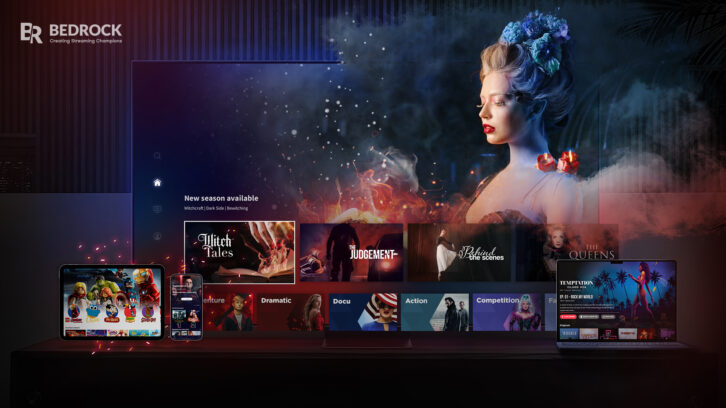Over the past year, the media industry has seen a distinct rise in subscription video services adding advertising-driven layers to their services.
From Amazon Prime’s launch of FreeVee to Netflix and Disney adopting ad-funded tiers to their existing platforms, more and more of the tech giants are increasing their advertising technology in order to lift revenues that have been impacted by the on-going cost of living crisis. Rather than lose viewers, they’re opting to offer subscriptions at a reduced price with ads included.
A joint venture between RTL Group and M6, streaming technology firm Bedrock is the backbone of RTL’s SVoD services in France, Germany and the Netherlands. Operating across Europe, the company is headquartered in Paris.
“We build streaming platforms from the beginning to the end of the process,” Bedrock CEO Jonas Engwall tells TVBEurope.
“This means that at the moment we have 40-45 million users on our platform across four countries. We deal with all kinds of platforms, AVoD, SVoD etc, and we deal with all kinds of content.”

Bedrock is able to meet all of its customers’ differing needs, whether that be delivering VoD content, linear TV, FAST channels, live channels, or live sport. “We always say to our stakeholders we actually have a harder job than the big tech giants,” he adds. “In the last couple of years Prime and Netflix have started to experiment with all these different types of content but we’ve been doing it for some time.”
That experience means that Bedrock can help platforms that are looking to shift from a subscription-led model to advertising. “It’s just a question of allocating time, basically. I know I make it sound easy, but it’s not easy. I can promise you that Netflix has been struggling and are still struggling on the advertising side.”
In fact, despite Netflix partnering with Microsoft on its advertising tier, Engwall believes the streamer will look to buy a company in the adtech space. “I can almost guarantee you that they will buy a company or they will build something over time, because it’s technology and know-how that they want to have in-house,” he says. “It’s just that it takes time and even if you’re Netflix, it’s not something you just dream up. It’s quite tricky.”
Bedrock aims to make the process of building a platform as easy as possible for its customers. To put it simply, they ingest their video, metadata, images etc into an API. Once the team at Bedrock has worked their “magic”, as Engwall puts it, content owners can start using the platform, personalising it to look they want. “They might want certain content to be pushed if the viewer is in front of the big screen, whereas if they’re on the mobile, maybe the content owner wants to push a different show,” explains Engwall.
“It’s important to say that although we share the same back-end with all our clients, what appears for the end user is totally different. Every client will have their own look and feel. One of the first things we do is to sit down with a client’s marketing and design teams and discuss how they want their platform to look and feel and engage with users.”
Engwall likens building a streaming service to a piece of Lego. “One set of Lego can make a firetruck, another a police car right, but at the start it’s all generic Lego,” he says. “We create a piece of Lego based on each client’s wishes and expectations, and then within that Lego, they can then choose a zillion adaptations.”
Already well established on the continent, Bedrock is looking at expansion into the UK. “We’re a little bit picky in the sense that we almost look at this as an exclusive streaming club,” adds Engwall. “We don’t just sell our technology to anyone who wants it. We want to create a win-win situation for everyone around the table.
“We want our clients to be market leaders. We want them to take streaming really seriously. We don’t want them to have a platform because they want to tick a box. We are happy to work with companies as long as it makes sense for both of us.”







